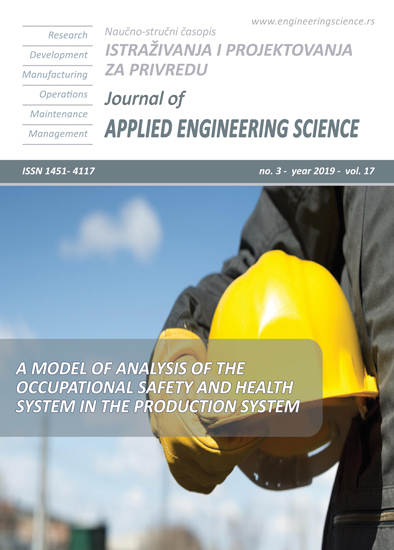PROTOTYPE OF WEB-BASED DAILY WORK REPORT MANAGEMENT SYSTEM USING A DIGITAL PEN
Abstract
As development schemes mature greater and higher complex, it has been more essential to employ information on the means practiced in the organization stage. Nevertheless, the falsities and trial of information oftentimes emerge in the course processing hand-written information. A construction project is performed by a combination of compound entrepreneurs and subcontractors that have diverse technologies and superintendence systems, and constant communication is demanded by yielding the construction information amongst the shareholders. Consequently, this research is to propose the prototype of a web-based periodic record management system that the project shareholders can partake construction information entered employing a digital pen on a web-based system. Based on the submitted system, this subject assumes the outcomes in view of production efficiency, smooth transmission, and resource management. The effect of this investigation provides to enhancing construction fecundity by proposing the web-based daily report management system to construction sites.
References
Ostroukh, A.V. (2013). Systems of Artifi cial Intelligence in the Industry, the Robotics and the Transport Complex. Krasnoyarsk, RU: PublishingHouseScienceandInnovationCenter, Ltd.
Ostroukh, A.V. &Surkova N.E. (2015). Intelligence Information Systems and Technologies. Krasnoyarsk, RU: Publishing House Science and Innovation Center, Ltd.
Ostroukh, A.V. & Tian, Yu. (2014). Automated system for monitoring production-technological and organizational-economic activity of industrial enterprises. Instruments and Systems: Monitoring, Control, and Diagnostics, (3), 14-21.
Tian, Yu., Nguen, D.T., Chaudhary, R.R. &Ostroukh, A.V. (2014). Automated monitoring production - technological and organizational - economic activities of an industrial enterprise. Automation and Control in Technical Systems, 3(1.2), 16-31. DOI: 10.12731/2306-1561-2014-1-16.
Ostroukh, A.V. & Tian, Yu. (2013). Integration of monitoring system components. Young Scientist, 6(10), 182-185.
Ostroukh, A.V. & Tian, Yu. (2014). Development of the information and analytical monitoring system of technological processes of the automobile industry enterprise. In the World of Scientifi c Discoveries, Series B,2(1), 92-102.
Gimadetdinov, M.K. &Ostroukh, A.V. (2014). List and Sequence of Solutions for Automated Crushing and Screening Production. Automation and Control in Technical Systems, 3(4), 55-61. DOI: 10.12731/2306-1561-2014-4-6.
Vorobeva, A.V., Ostroukh, A.V. Gimadetdinov, M.K., Wai Phyo Aung &Myo Lin Aung. (2015). Development of mathematical models and methods of optimal control of automated crushing and screening process. IndustrialAutomaticControlSystemsandControllers, (1), 9-16.
Gimadetdinov, M.K., Popov, V.P. &Ostroukh, A.V. (2015). Automation of Crushing and Screening Production with a Full Range of Technological Operations and Related Processes. Industrial Automatic Control Systems and Controllers, (9), 10-18.
Salniy, A.G., Kukharenko, V.N., Nikolaev, A.B.&Ostroukh, A.V. (2013). General Principles of SCADA Design. AutomationandControlinTechnicalSystems, 2(2), 8-12.
Varlamov,O.O. (2015). Mivar Role and Place in Computer Sciences, Artifi cial Intelligence Systems and Informatics.Radio Industry,(3), 10-27.
Shadrin, S.S., Varlamov, O.O. & Ivanov, A.M. (2017). Experimental Autonomous Road Vehicle with Logical Artifi cial Intelligence. Journal of Advanced Transportation. DOI:10.1155/2017/2492765.
Lee, D. E., Son, C. B. (2012). Improvement measures of daily work report for efficient enactment and/or revision of construction standard production unit system. Journal of Architectural Institute of Korea, vol. 28, no. 5, 135-142.
Shin, W. S., Lee, D. E., Son, C. B. (2013). Analyzing the operational conditions on daily work report of specialty contractors and its improvement measures. Journal of Architectural Institute of Korea, vol. 29, no. 11, 91-98.

